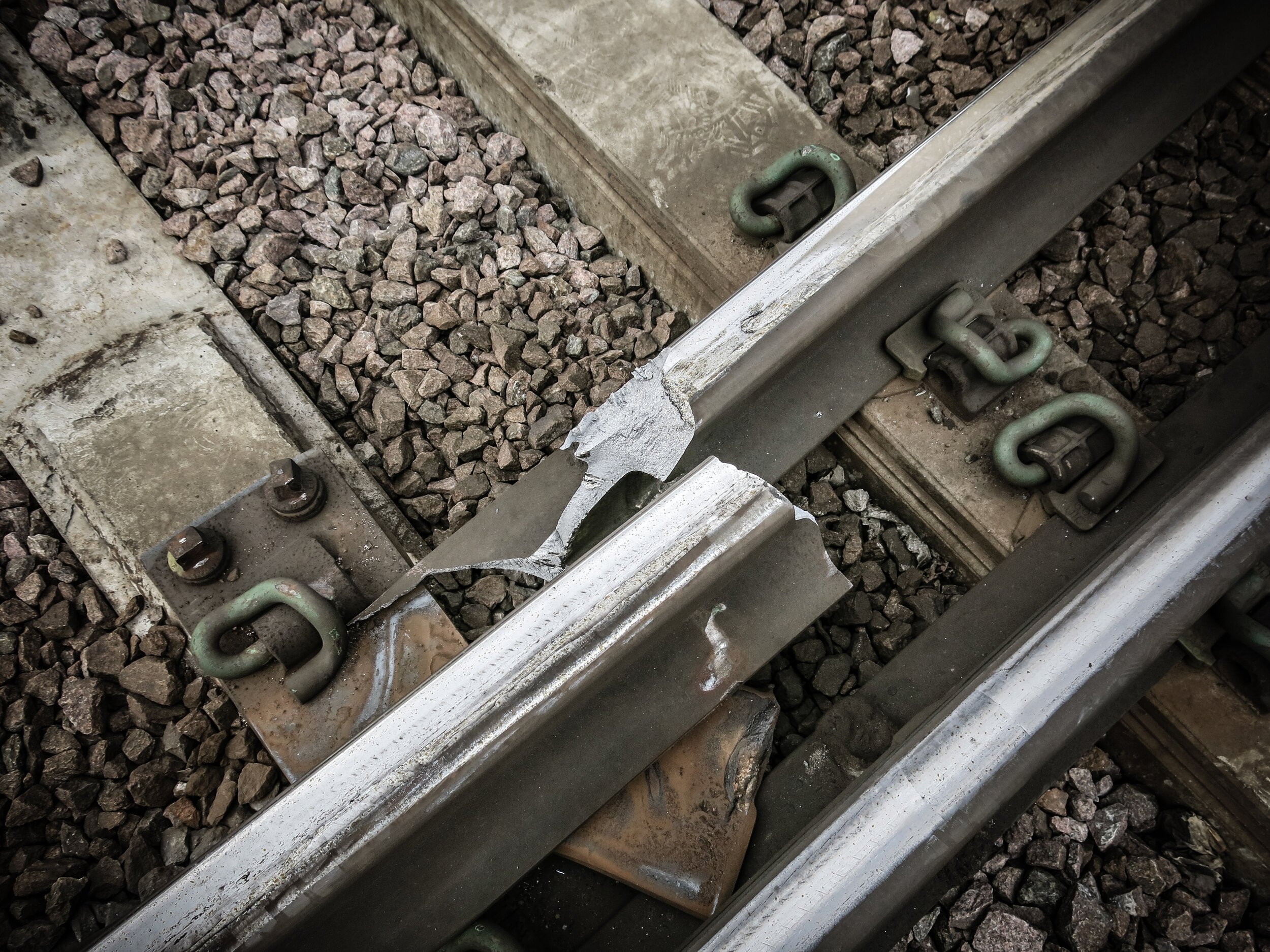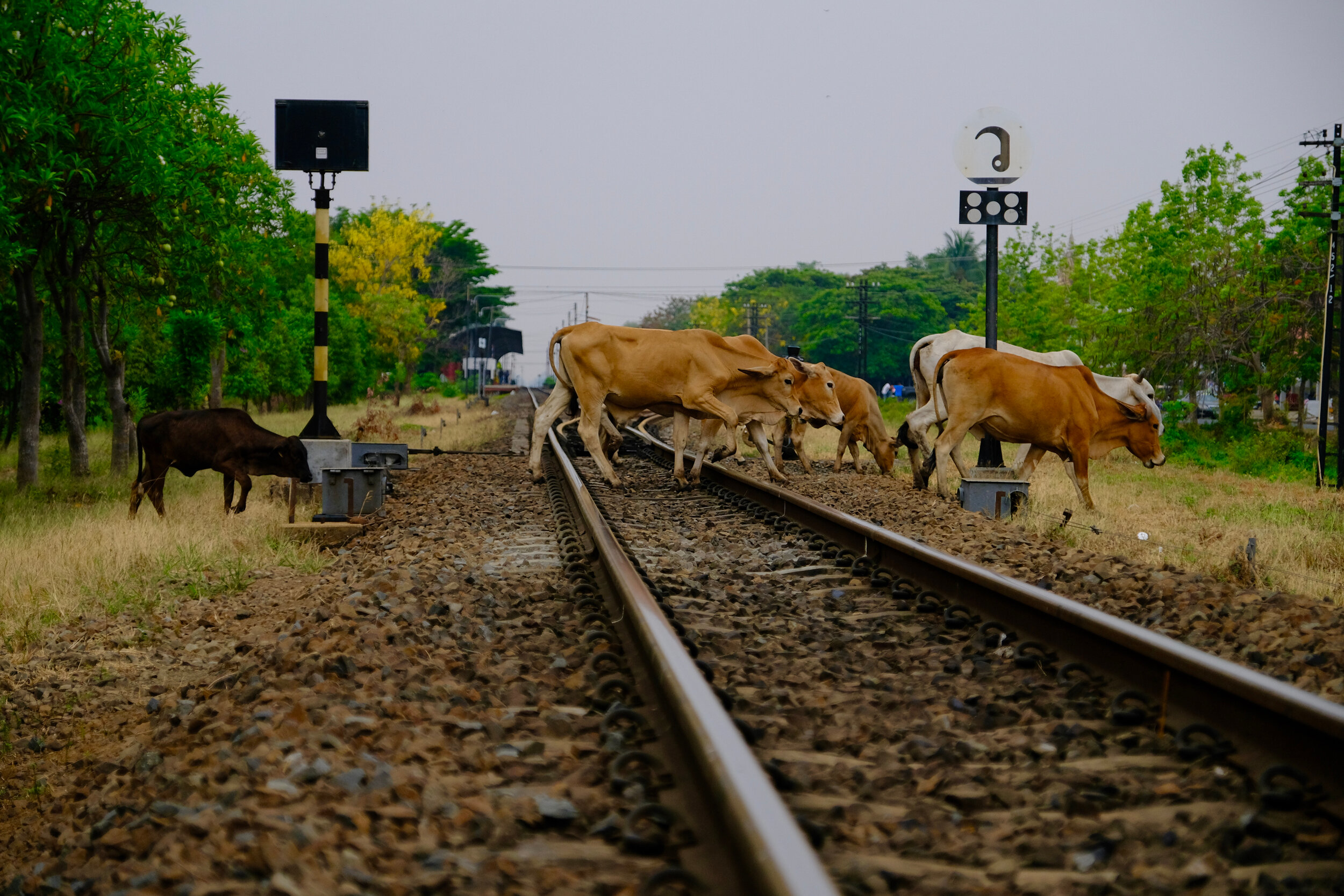
Solutions
Our solution is able to detect anomalies occurring on the rail tracks by analyzing the energy which travels in the rails across long distances, strain and the rail temperature. In addition, our systems provide additional information to operators, such as the number of wagons passing a designated point of reference, speed predictions of rolling stock, number of axles and the direction which the rolling stocks travels in.
There are still a high number of accidents where the triggers are not detected in time, or at all, as can be seen on the graph below. Our solutions are able to detect such precursors in advance and could play a role in preventing such accidents from happening.
Diagnostics Applications
Axle Derailment Monitoring
The Axle Derailment Monitoring application detects derailed axles on rolling stock and sends alarms to the operators once the issue is detected.
The outputs for this application are:
Axle derailment alarm
Rolling stock statistics (number of rolling stock passes observed, direction of travel)
Axle derailment severity
Rolling stock advanced statistics (number of axles, wagons, type of rolling stock, speed)
Rail Defect Monitoring
The Rail Defect Monitoring application monitors the structural integrity of the rail.
Complete rail separation
Development of cracks
The outputs for this application:
Complete rail separation alarm
Estimated location of fault
Complete rail separation alarm in case of the snap of the rail caused by rail stress (no rolling stock pass needed for detection)
Developing crack alarm
Estimated location of the crack
Severity of the crack
Estimated time until full separation
Track Obstruction Monitoring
The Track Obstruction Monitoring application detects when objects fall on the track causing a dangerous situation for any rolling stock traveling on the rail.
The outputs for this application are:
Track obstruction alarm including severity
Distance estimation of the event relative to the position of the sensors
Cause of the obstruction (landslide, avalanche, trees, rocks etc)
Flat Wheel Detection
The Flat Wheel Detection application detects the presence, location and severity of flat wheels on any rolling stock.
The outputs for this application are:
Flat wheel detection
Severity
Location in terms of distance from the front part of the rolling stock
Location of the flat wheel in terms of the specific axle of the rolling stock
Intrusion Detection Application
The outputs for this application are:
Detects suspicious activity in the vicinity of the sensors
Alerts of animal activity or human activity in the vicinity of the sensors
Detects sabotaging incidents such as drilling, cutting, etc, of the rails and cable theft
Portable Warning System
The Portable Warning System detects trains approaching work sites and alarms the personnel over walkie talkies.
Installation and deployment takes only few seconds - one DXMD is attached to every rail using magnets only
Powered by batteries and operational for at least 12 hours
The system can be connected with amateur and professional walkie talkies using the handsfree port. It supports VOX or push-to-talk functionality
Rail Buckling Monitoring
The outputs for this application are:
•Monitoring of rail temperature and longitudinal stress; alarming when the temperature and longitudinal stress reach critical values
Detection of rail snap due to excessive compressive/tensile forces
Detection of rail displacement/deformation
Switch Condition Monitoring (Dynamic Effects)
The outputs for this application are:
Monitors the moveable parts of the switch ensuring the meant positions are reached
Monitors the structural health of the switch regardless of the rolling stock wheel conditions
Monitors the sleepers and switch foundation, identifying irregular movement that could affect the condition of the switch
Monitors the specific elements of the switch where traditional track circuits cannot, such as tongue rail cracks, using an active approach
Safety Applications
rail occupancy monitoring
The outputs for this application are:
Rolling stock locaton in term of monitored segments, i.e., the system knows in what monitored segment the rolling stock is currently at
Rolling stock informaton while crossing a sensor point (direction of travel, speed, number of axles)
Exact location of rolling stock and reduced number of segments covering larger distances
Rolling Stock Monitoring
The Rolling Stock Monitoring application monitors the movements of rolling stock at a specified area and is able to predict the arrival time of the rolling stock at the installation location.
The outputs for this application are:
Location of the rolling stock with respect to the installation point (arriving, on top of the sensors, departing)
Predicted arrival time (e.g. constant warning times at level crossings)
Rolling stock statistics (number of rolling stock passes observed, direction of travel)
Support for atypical rolling stock movements, e.g. the same rolling stock moving in opposite directions on the same track
Rolling stock advanced statistics (number of axles, wagons, type of rolling stock, speed)
Rolling stock identification or tagging
Our R&D department is constantly working on the improvement and innovation of our solutions. New applications being developed include Flood Detection and Rolling Stock Weighing.
Rolling stock weighing is an important topic for every infrastructure owner, overloaded wheels can lead to increased wearing of wheels and infrastructure, therefore the importance of keeping an eye on the loads imposed on every wheel of the rolling stock. DSRailTechs Rolling Stock Weighing Application measures the load on every wheel of any rolling stock, regardless of speed, informing the operators of any deviations from their set default values.
Flood detection detects the presence of water and generates alarms whenever the water reaches dangerous levels, informs when the water retracts. (sensors are not submerged anymore), detects if the water is flowing or still and detects solid materials in the water.
Both applications will be available in 2025. Should your company wish to take part in our trials then please contact us at trials@dsrailtech.com











